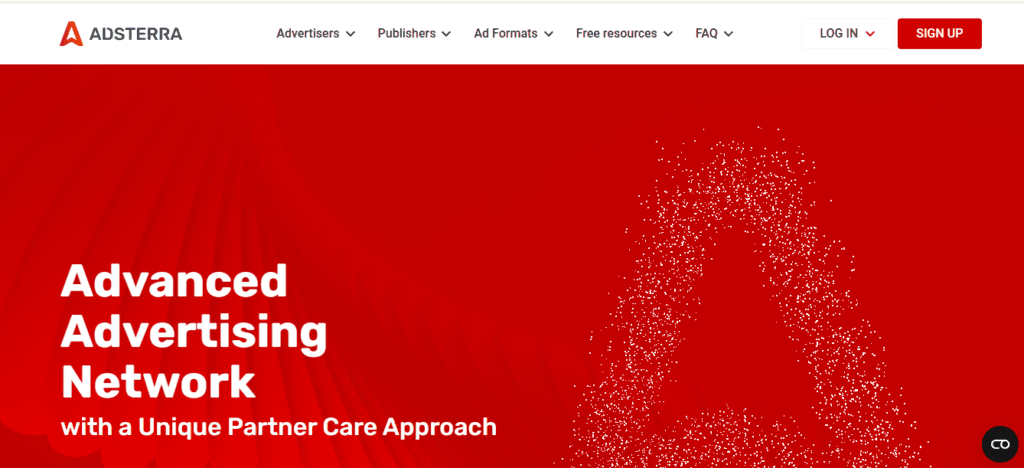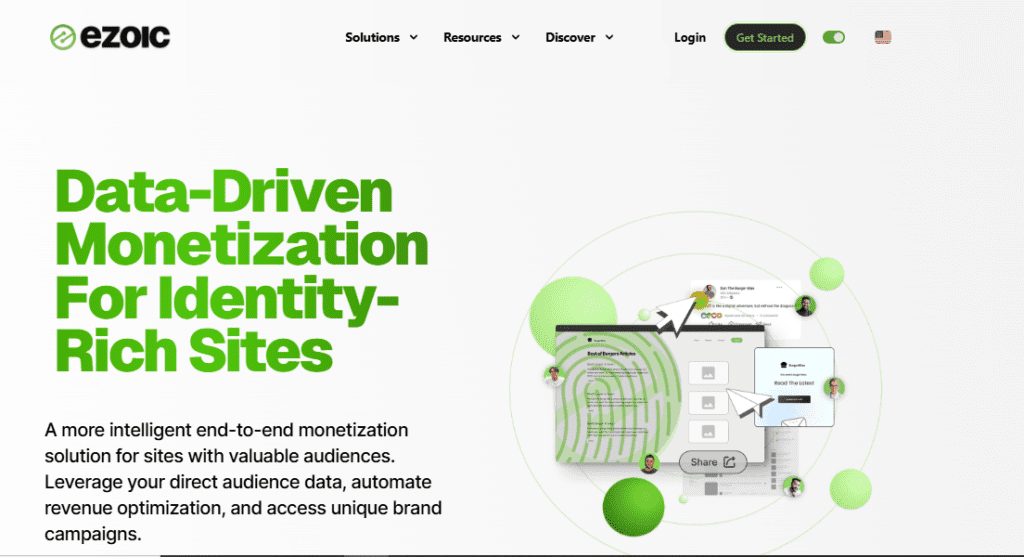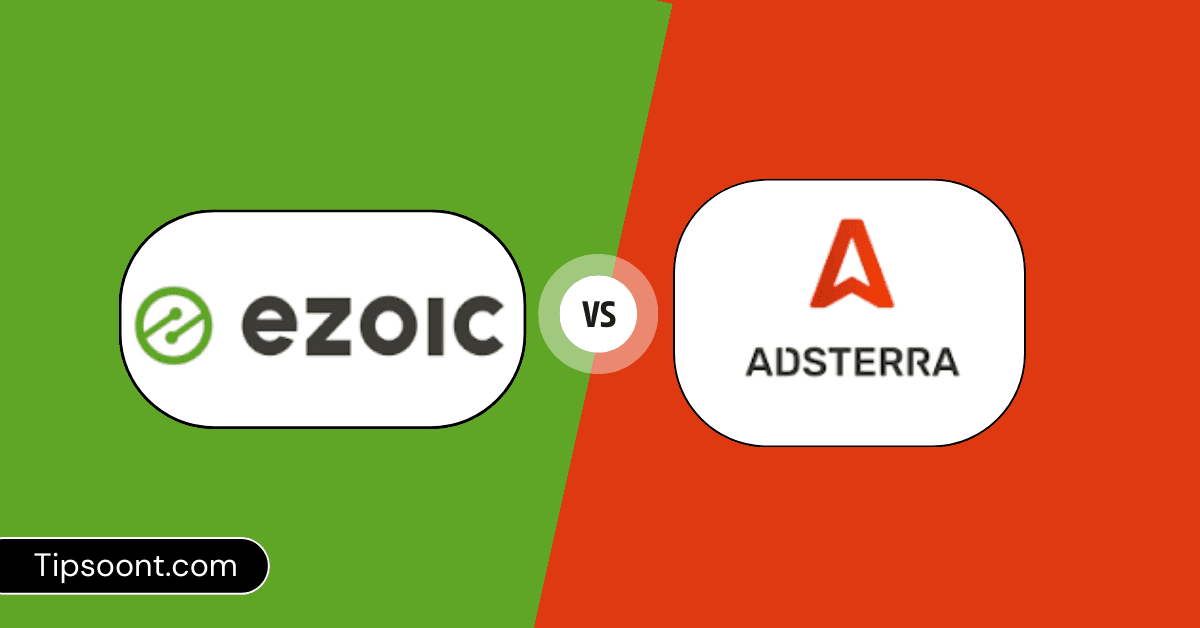If you’re looking to monetize your website, you might wonder which ad platform to choose: Adsterra vs Ezoic. These two popular platforms offer great tools to earn money through ads, but each has unique features. In this guide, we’ll break down what you need to know about both platforms so you can choose the best one for your needs.
What Are Adsterra and Ezoic?
Before we jump into comparing Adsterra vs Ezoic, let’s understand what these platforms are and how they work.

– Adsterra Overview
Adsterra is a popular ad network used by thousands of publishers around the world. It offers a wide range of ad formats—like banner ads, pop-unders, and native ads—that allow publishers to monetize in different ways. Adsterra is known for its ease of use and global reach, making it a top choice for websites with international audiences.

– Ezoic Overview
Ezoic is an ad optimization platform that uses artificial intelligence to improve ad placement and increase revenue. Unlike most ad networks, Ezoic’s main focus is optimization rather than just ad display. By analyzing user behavior, Ezoic’s AI helps you maximize earnings from each page view, which is ideal for publishers who prioritize a balanced user experience.
Why Choose Between Adsterra and Ezoic?
When selecting the right ad platform, consider your goals: Do you need fast setup and flexibility, or are you looking for long-term revenue growth and high-quality ads? Understanding these goals will help you decide between Adsterra vs Ezoic.
Key Differences Between Adsterra and Ezoic
1. Revenue Potential: Short-Term vs. Long-Term Gains
With Adsterra, you can potentially earn good money right away, especially if you have high global traffic. Adsterra’s CPM rates for certain ad types, like pop-unders, are typically high. This may lead to immediate income gains, making it attractive for new publishers or those with a lot of global visitors.
Ezoic, on the other hand, is more about the long game. Using advanced algorithms, Ezoic optimizes ad placements based on visitor behavior to drive higher revenue over time. If you’re patient, Ezoic’s AI system can increase your earnings significantly by learning the best spots to place ads on your site.
2. Ad Formats and Types: Flexibility vs. Quality
Adsterra offers flexibility with its variety of ad formats:
- Pop-unders: High-paying but potentially intrusive.
- Native ads: Less intrusive and blend with content.
- Banner ads: Classic format that works well with many websites.
- Video ads: Engaging and profitable for certain niches.
- Push notifications: These work even after users leave your site, allowing for potential re-engagement.
Ezoic is more focused on quality and relevance. Through partnerships like Google Ad Exchange, Ezoic provides access to premium ad types:
- Display ads: Often targeted and high-quality.
- Video ads: Only relevant if video content fits your site.
Because Ezoic uses AI, it customizes ad placements to maximize revenue and balance the visitor experience. This might mean fewer pop-ups and more subtle, user-friendly ads.
3. User Experience: Pop-Unders vs. Smart Placements
User experience can have a big impact on your website’s success. Adsterra’s pop-under ads, while high-paying, can sometimes frustrate users and may lead to a higher bounce rate. This can harm your site’s reputation, especially if users find the ads intrusive.
Ezoic’s AI helps balance ad frequency and placement with user experience. Instead of focusing only on revenue, Ezoic’s AI also looks at site speed, engagement, and bounce rate. For sites that rely on return visitors, Ezoic might offer a more visitor-friendly option than Adsterra.
4. Control Over Ads: Simplicity vs. Customization
One of the standout features of Adsterra is simplicity. Its dashboard is easy to navigate, and you can set up ads quickly without much technical knowledge. This is great for publishers who want to “set it and forget it.”
Ezoic offers more customization but requires a bit more technical understanding. With Ezoic, you have access to detailed analytics, A/B testing tools, and various control options to tailor ad experiences. If you’re comfortable with experimenting, Ezoic’s options allow for more fine-tuning and potentially better revenue results.
5. Payment Options and Thresholds: Low Minimums vs. High Options
When it comes to getting paid, both platforms offer multiple options, but their thresholds and flexibility vary.
- Adsterra: The minimum payout is low at $5, making it easy to cash out even if you’re just starting. Payment methods include PayPal, Bitcoin, WebMoney, and bank transfers.
- Ezoic: Has a $20 minimum payout, which is higher but still accessible. Ezoic payments are available via PayPal, direct deposit, or Payoneer.
For new publishers or those with smaller traffic volumes, Adsterra’s low payout threshold can be a significant advantage.
Advanced Features in Adsterra and Ezoic

A/B Testing and Analytics
One of Ezoic’s best features is its A/B testing tool, which allows you to test different ad placements, formats, and densities. This testing helps identify the best combination for revenue and user experience. Ezoic’s analytics dashboard offers in-depth insights into ad performance, user behavior, and revenue trends.
Adsterra, while simpler, provides standard analytics that let you track impressions, clicks, and revenue. It doesn’t have built-in A/B testing, but it’s straightforward enough for users who want basic metrics without advanced customization.
AI-Driven Optimization
Ezoic’s AI-powered platform stands out in terms of ad optimization. As your traffic grows, the AI learns and improves ad placements, ensuring you maximize your revenue. This technology-driven approach can offer a competitive advantage if you’re focused on long-term growth and fine-tuned ad placements.
Adsterra lacks AI-driven optimization but compensates with ad variety and ease of use, making it a great choice for publishers who prioritize simplicity.
Pros and Cons of Adsterra and Ezoic
Adsterra Pros:
- Broad range of ad formats for flexibility
- Quick, easy setup for new users
- Low minimum payout threshold ($5)
- Great for websites with global traffic
Adsterra Cons:
- Pop-unders can impact user experience
- Limited optimization features compared to Ezoic
Ezoic Pros:
- AI-driven optimization for higher long-term revenue
- Access to high-quality ads via Google Ad Exchange
- Enhanced user experience through smart ad placements
- Advanced testing and analytics tools
Ezoic Cons:
- Higher payout threshold ($20)
- Can be complex for beginners
Choosing the Right Platform: Who Should Use Adsterra vs. Ezoic?
Selecting between Adsterra vs Ezoic depends on your website’s traffic, revenue goals, and your comfort with customization:
- Adsterra is ideal if you want a straightforward setup, flexible ad formats, and quick earnings with low thresholds.
- Ezoic is better suited for publishers looking to maximize revenue with premium ads, optimize user experience, and leverage AI for smarter placements.
Getting Started with Adsterra and Ezoic: A Step-By-Step Guide
Setting Up Adsterra
- Sign Up: Register for an Adsterra account.
- Select Ad Types: Pick ad formats based on your site’s audience.
- Install Ad Codes: Place the ad codes on your website for instant monetization.
Setting Up Ezoic
- Register: Create an Ezoic account and verify your site.
- Ad Exchange Approval: Set up access to Google Ad Exchange (if applicable).
- Optimize: Use Ezoic’s testing tools to find the best-performing ads and layouts.
Final Thoughts: Adsterra vs Ezoic – Which Is Better?
In conclusion, Adsterra vs Ezoic are both excellent ad platforms, but they serve different purposes. Adsterra is perfect for publishers who want quick and easy ad setups with varied formats. It’s simple, has a low payout threshold, and is great for international audiences.
Ezoic, on the other hand, is ideal if you’re looking for high-quality ads and long-term revenue growth. By using AI optimization, Ezoic finds the best ad placements and delivers a balanced experience for your visitors.
Conclusion
Choosing between Adsterra vs Ezoic requires considering both the immediate benefits and long-term value. Adsterra suits those wanting easy setup, quick earnings, and a low payout threshold, whereas Ezoic appeals to those who prioritize AI-driven revenue optimization, better user experience, and premium ad quality. With this guide, you’re ready to select the ad platform that aligns with your website’s goals and audience.
Stay connected with us otherwise, we will MISS You 🙂
Also Explore: Top 16+ Most Trusted Online Earning Sites To Earn With Skill And Without Skill
- How to Prevent Website Crashes: 7 Reasons & how to Fix Them - February 28, 2025
- What is Cloaking in SEO? Examples, Risks & Tools - November 26, 2024
- 10 Advanced WordPress SEO Tips to Boost Rankings Fast - November 17, 2024







